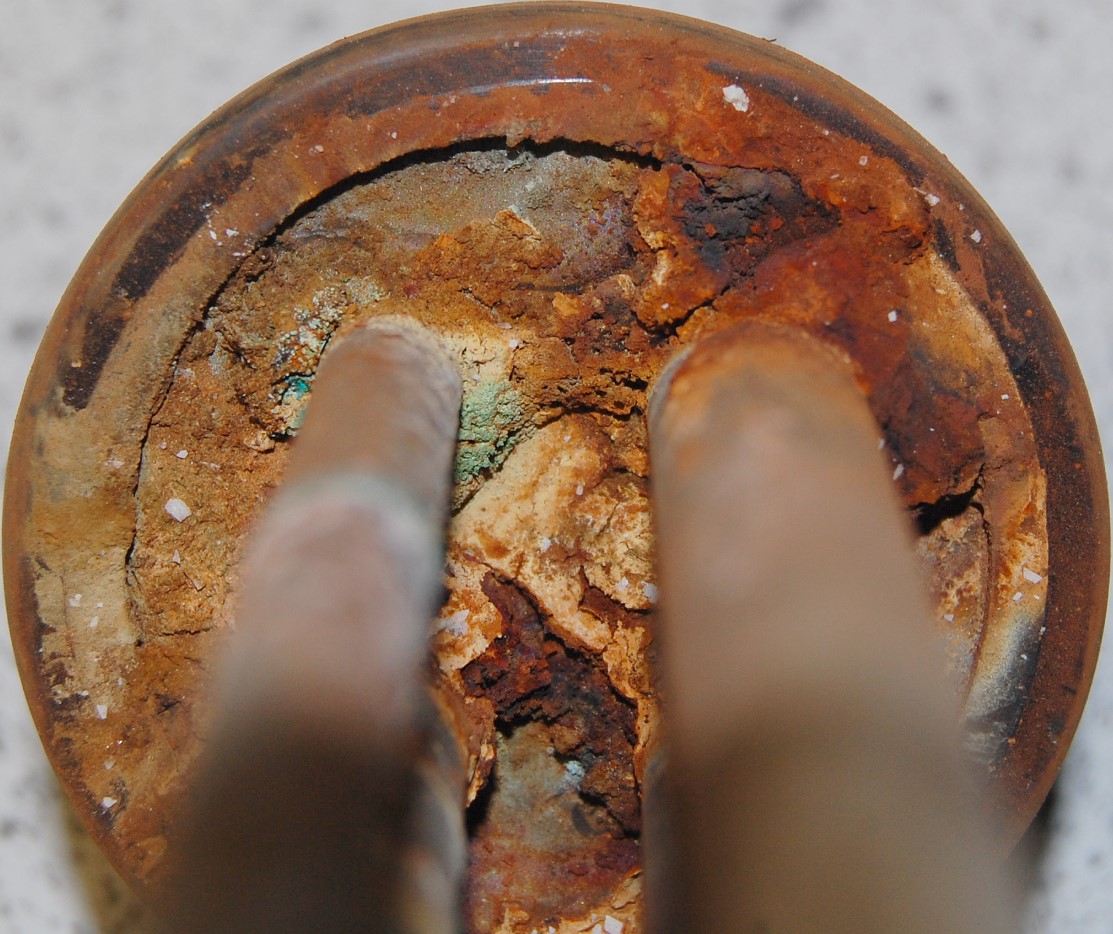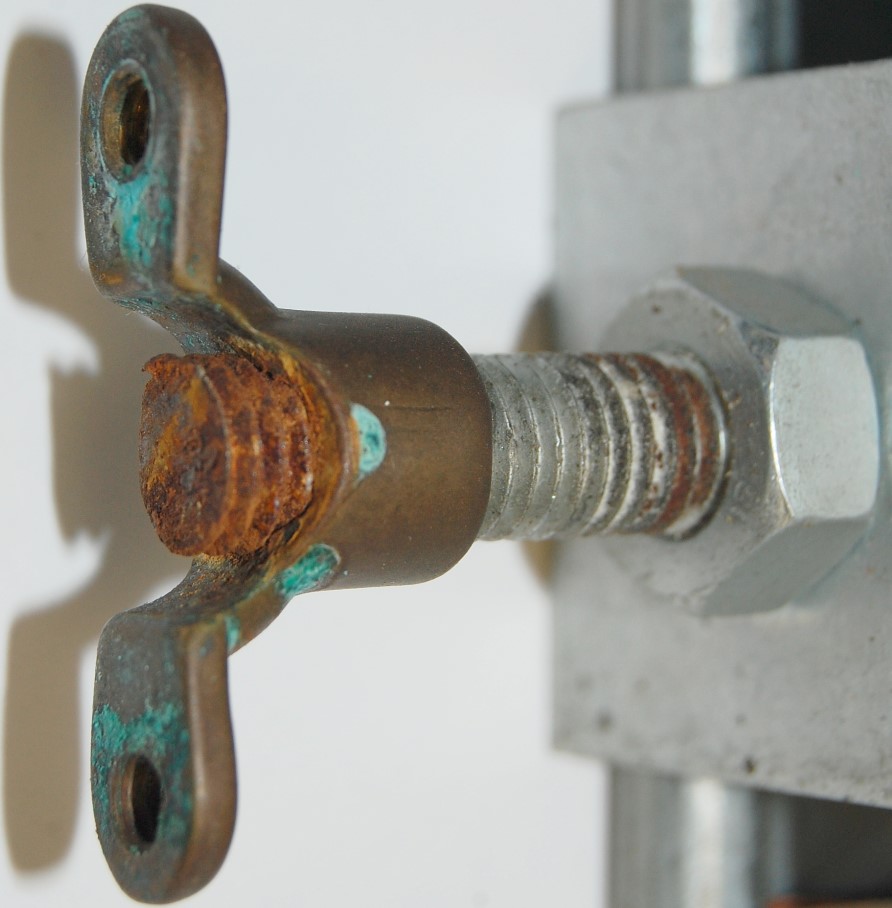Aqueous Corrosion of Metals
 Aqueous corrosion occurs in countless industrial and domestic environments and attack can manifest itself in many forms, from uniform corrosion to localised corrosion such as pitting corrosion or crevice corrosion. Corrosion can also occur in conjunction with static or cyclic stress regimes and in these synergistic corrosion mechanisms, such as stress corrosion cracking and corrosion fatigue, the rate of crack propagation can be rapid. High-temperature corrosion occurring in hot and aggressive gases is termed oxidation.
Aqueous corrosion occurs in countless industrial and domestic environments and attack can manifest itself in many forms, from uniform corrosion to localised corrosion such as pitting corrosion or crevice corrosion. Corrosion can also occur in conjunction with static or cyclic stress regimes and in these synergistic corrosion mechanisms, such as stress corrosion cracking and corrosion fatigue, the rate of crack propagation can be rapid. High-temperature corrosion occurring in hot and aggressive gases is termed oxidation.
Often components fail due to corrosion. Metallurgical failure examination of the failed component can help to identify the cause of the corrosion and ways to prevent or at least mitigate future damage caused by corrosion. Metallographic examination is sometimes required to determine the type of corrosion and SEM / EDX analysis of the corrosion products can help identify the aggressive species that played a role in the corrosion process and aspects of microbiologically induced corrosion MIC. Ion Chromatography IC can be used to help identify the corrosive species and combined with pH and conductivity measurements can determine the likelihood of a metal to corrode in environmental conditions.
LPD Lab Services can perform electrochemical corrosion testing using a potentiostat to determine the corrosion rate of metals and alloys in a given aqueous environment. This is particularly handy if a client wants to determine the effect of a new product, such as an additive or corrosion inhibitor, on the corrosion behaviour of the materials in the system that the new product would be used in, or selecting the most suitable material for a certain environment. Electrochemical corrosion testing methods can also determine the galvanic effect on corrosion when two dissimilar metals or alloys are combined
 Typical causes of corrosion can include:
Typical causes of corrosion can include:
- Damaged protective coating or plating.
- Aggressive species, such as chlorides from degraded PVC.
- Decreased pH, for example due to wet phenolic foam insulation corroding steel and copper water pipes.
- Microbial action, such as with sulphate reducing bacteria SRB and pseudonomics.
- Differential oxidation, as with crevice corrosion.
- Imposed anodic current, e.g. in contact with a more noble metal or a stray current.
- Incorrect microstructure, like sensitisation causing knife line attack at welds
Corrosion processes are mostly electrochemical in nature. It requires an aqueous environment where an oxidation reaction occurs on anodic areas of the metallic component and a reduction reaction, or more than one reduction reaction, occurs on cathodic areas. This could occur on the same metallic component or remotely, but electrically connected parts. Even in the case of atmospheric corrosion the surface is exposed to a thin layer of moisture, sometimes with successive wet and dry periods. The reduction reaction consumes electrons and is what drives the corrosion process. There are a number of possible reduction reactions and the active reaction is dependant on the corrosion environment, i.e. species present, pH, temperature and magnitude of any impressed current. Even if corrosion does not lead to fracture or rupture it can cause loss of efficiency, due to loss of critical dimensions or contamination of product, such as copper oxide in drinking water or rust in canned food.

